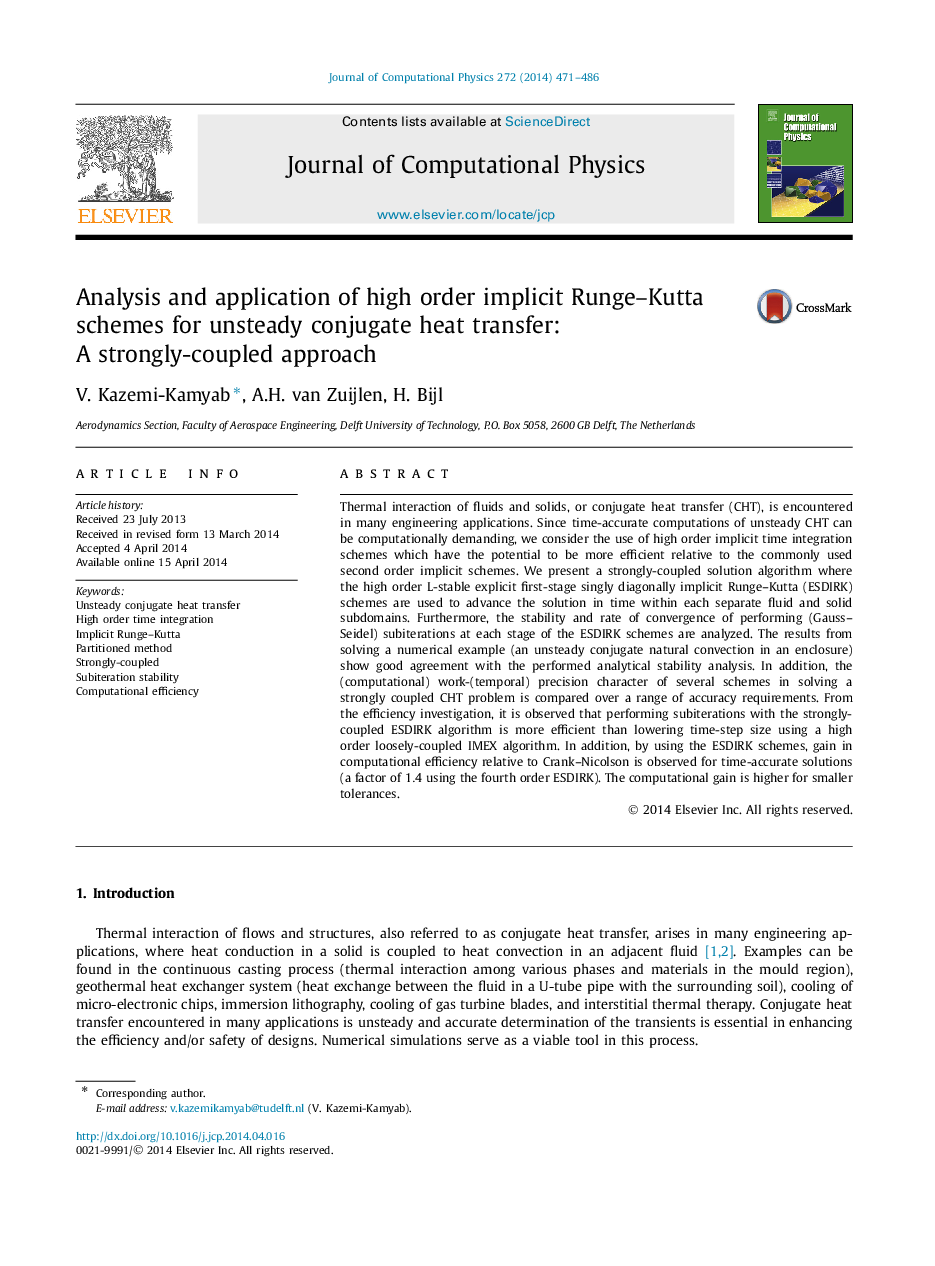| کد مقاله | کد نشریه | سال انتشار | مقاله انگلیسی | نسخه تمام متن |
|---|---|---|---|---|
| 520049 | 867694 | 2014 | 16 صفحه PDF | دانلود رایگان |

Thermal interaction of fluids and solids, or conjugate heat transfer (CHT), is encountered in many engineering applications. Since time-accurate computations of unsteady CHT can be computationally demanding, we consider the use of high order implicit time integration schemes which have the potential to be more efficient relative to the commonly used second order implicit schemes. We present a strongly-coupled solution algorithm where the high order L-stable explicit first-stage singly diagonally implicit Runge–Kutta (ESDIRK) schemes are used to advance the solution in time within each separate fluid and solid subdomains. Furthermore, the stability and rate of convergence of performing (Gauss–Seidel) subiterations at each stage of the ESDIRK schemes are analyzed. The results from solving a numerical example (an unsteady conjugate natural convection in an enclosure) show good agreement with the performed analytical stability analysis. In addition, the (computational) work-(temporal) precision character of several schemes in solving a strongly coupled CHT problem is compared over a range of accuracy requirements. From the efficiency investigation, it is observed that performing subiterations with the strongly-coupled ESDIRK algorithm is more efficient than lowering time-step size using a high order loosely-coupled IMEX algorithm. In addition, by using the ESDIRK schemes, gain in computational efficiency relative to Crank–Nicolson is observed for time-accurate solutions (a factor of 1.4 using the fourth order ESDIRK). The computational gain is higher for smaller tolerances.
Journal: Journal of Computational Physics - Volume 272, 1 September 2014, Pages 471–486